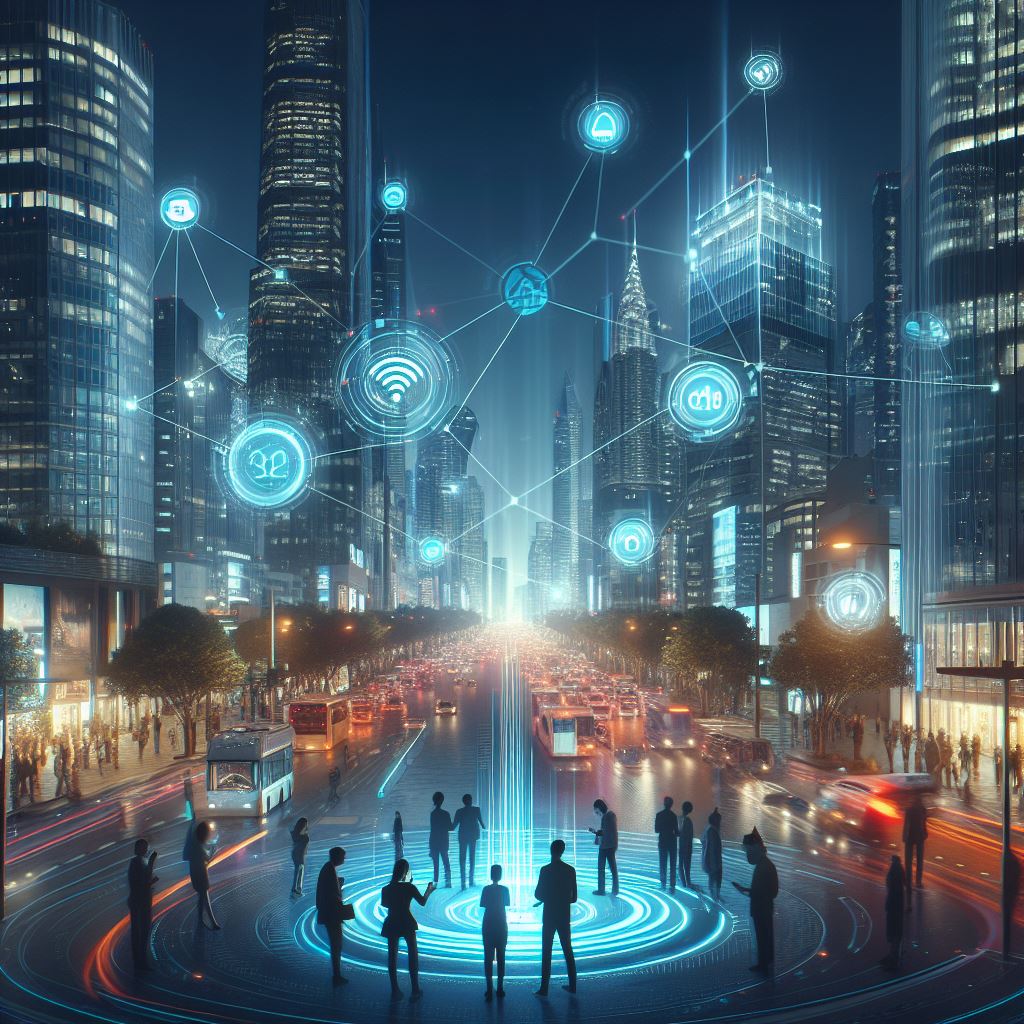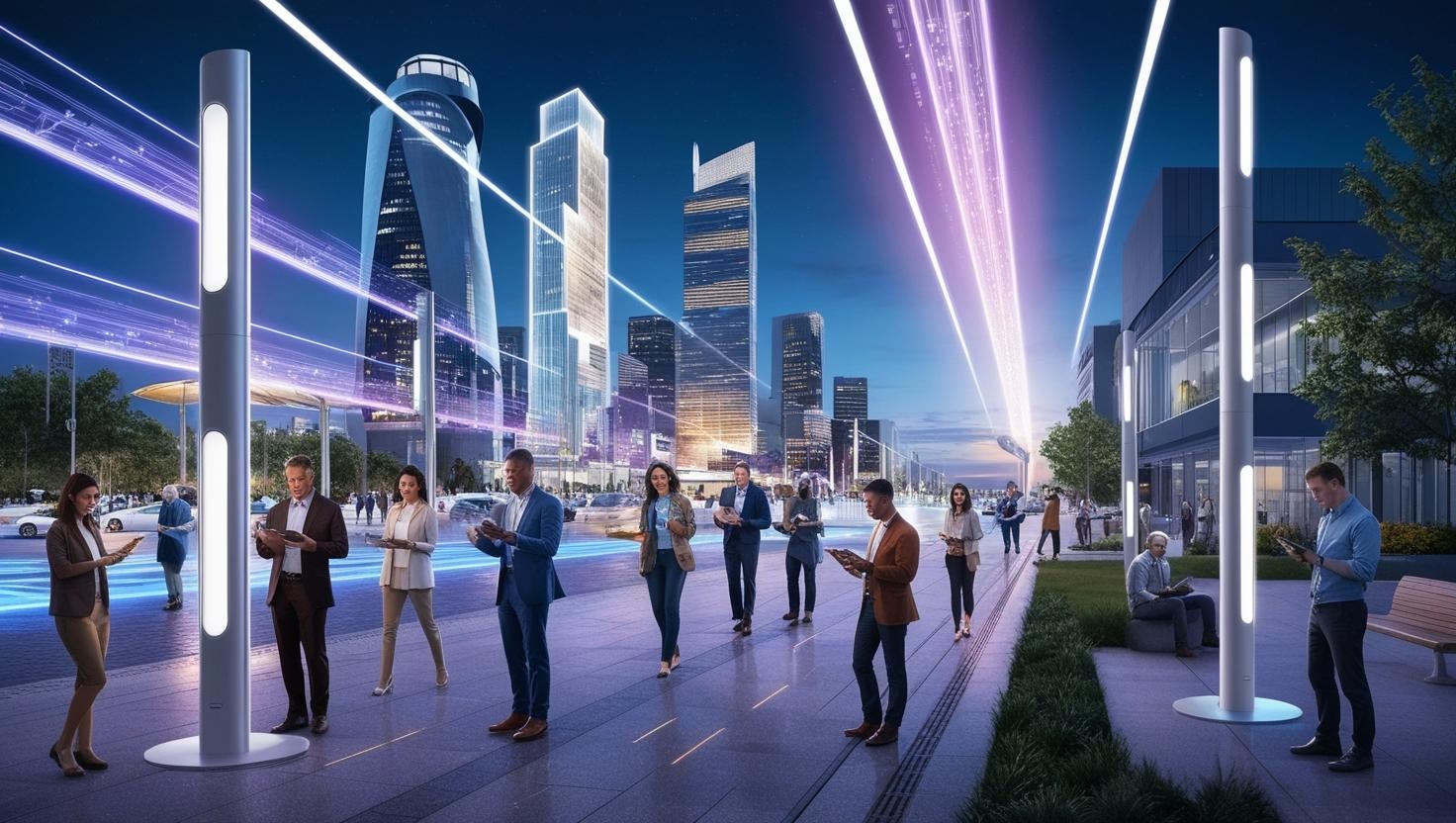In an era where high-speed internet is essential for virtually every aspect of daily life, new wireless communication technologies are emerging to enhance and expand the way we connect to the digital world. One such promising technology is Light Fidelity (Li-Fi), a wireless communication technology that uses visible light to transmit data, offering potentially faster, more secure, and more efficient communication than traditional radio-frequency-based systems like Wi-Fi.
While still in the early stages of mainstream adoption, Li-Fi technology is poised to redefine connectivity as we know it. Let’s take a closer look at the future of the Li-Fi technology industry, the advancements we can expect, and the role it will play in the digital transformation across various sectors.
What is Li-Fi Technology?
Li-Fi stands for Light Fidelity, a wireless communication system that transmits data using visible light (instead of radio frequencies, as in Wi-Fi). It operates by modulating light from LEDs at extremely high speeds, creating a data stream that can be received by photodetectors in devices like smartphones, tablets, laptops, and wearables.
Li-Fi is seen as a potential game-changer in the wireless communication space because it offers several advantages over traditional Wi-Fi, including:
- Higher speeds: Li-Fi can provide speeds up to 100 times faster than current Wi-Fi technologies.
- Enhanced security: Since light cannot pass through walls, it creates a more secure communication environment.
- Reduced interference: Li-Fi operates in the visible light spectrum, which is free from the radio interference that affects Wi-Fi signals.
The Current State of the Li-Fi Industry
Li-Fi technology is currently undergoing development in research labs and pilot projects, with a handful of companies and academic institutions leading the charge in innovation. Velmenni, a startup that conducted one of the first public demonstrations of Li-Fi, is an example of a company working to bring this technology closer to real-world applications. As the global demand for faster, more reliable internet continues to rise, the industry is beginning to recognize the need for an alternative to Wi-Fi and cellular networks.
Currently, Li-Fi is being tested in environments such as:
- Smart homes
- Offices
- Hospitals
- Airports
- Educational institutions
These early deployments provide insight into the potential benefits of Li-Fi for both consumers and businesses alike, particularly in spaces where high-speed, secure data transmission is critical.
The FSO & VLC/Li-Fi market was valued at USD 2.78 billion in 2024 and is projected to reach USD 7.39 billion by 2029, growing at a CAGR of 21.6% from 2024 to 2029.
The primary factor driving the growth of VLC/Li-Fi market is the faster and safer data transfer. Data transmission through VLC/Li-Fi is more secure and achieves high data rates compared to conventional wireless technologies such as Wi-Fi, Bluetooth, and Worldwide Interoperability for Microwave Access (WiMAX), which use radio waves for communication. Since light waves do not penetrate walls, they cannot be intercepted and misused. A networking speed of 100 Mbps can easily be obtained with the use of the VLC technology using LEDs.
Download PDF Brochure @ https://www.marketsandmarkets.com/pdfdownloadNew.asp?id=946

Key Drivers for the Growth of Li-Fi Technology
Several factors are contributing to the growing interest in Li-Fi technology and its potential for future growth:
- Rising Demand for High-Speed Connectivity: As the demand for data-intensive applications like 4K video streaming, virtual reality (VR), and augmented reality (AR) continues to rise, existing wireless technologies like Wi-Fi and 4G networks are often insufficient to meet the needs of consumers and enterprises. Li-Fi promises to fill the gap by offering higher speeds and more stable connections.
- Spectrum Shortage in Radio Frequencies: Wi-Fi and other radio-frequency-based technologies are operating in increasingly crowded airwaves, leading to congestion and potential performance issues. Li-Fi leverages the visible light spectrum, which is underutilized, thus helping alleviate the pressure on radio-frequency bands.
- Increased Adoption of Smart Devices: The growing number of smart devices in homes and workplaces increases the need for robust, scalable wireless communication solutions. Li-Fi can provide the necessary bandwidth and speed for these connected devices, facilitating more efficient communication.
- Advancements in LED Lighting: As LED lighting becomes more widespread, the potential to integrate Li-Fi technology with lighting systems increases. LEDs are energy-efficient, long-lasting, and capable of high-frequency modulation, making them ideal for Li-Fi systems.
Li-Fi Applications and Use Cases
As Li-Fi technology matures, it is expected to have a broad range of applications across various industries. Below are some of the key sectors where Li-Fi can make a significant impact:
1. Smart Cities
Li-Fi has immense potential in the development of smart cities. Public infrastructure such as streetlights can be equipped with Li-Fi-enabled LEDs to provide wireless internet access to citizens, enabling high-speed connectivity in public spaces. It can also be used for traffic management, data transmission for sensors, and other IoT-enabled smart systems that rely on fast, secure data transfer.
2. Healthcare
In healthcare settings, Li-Fi can improve patient care by providing reliable, interference-free communication networks. Medical devices can be connected through a Li-Fi system, transmitting critical data without the risk of interference from radio-frequency signals, which could disrupt sensitive equipment. Moreover, Li-Fi can be used in environments where security is paramount, such as in operating rooms or pharmaceutical labs, where Wi-Fi signals could pose a security risk.
3. Industrial Applications
Li-Fi has the potential to revolutionize industries such as manufacturing, mining, and automotive, where reliable and high-speed wireless communication is essential. It can be used to connect devices on factory floors, transmit real-time data to control systems, and provide location-based services for equipment tracking. Furthermore, Li-Fi can support highly secure communication in environments where radio signals might pose a security risk, such as defense or sensitive government facilities.
4. Aviation
In the aviation industry, where reliable and secure communication is crucial, Li-Fi can be used to provide in-flight connectivity. This technology can deliver faster internet speeds to passengers, allowing them to stream media, browse the web, and use business applications without disrupting aircraft systems.
5. Education
The education sector can benefit significantly from Li-Fi, offering high-speed internet access in classrooms, libraries, and campus areas. With Li-Fi, students and educators will have faster, more reliable access to online resources, making e-learning and digital classrooms more efficient.
6. Retail
In retail spaces, Li-Fi can be used for location-based services, delivering customized offers and promotions to customers’ devices as they move through a store. Retailers can also use Li-Fi to enhance the shopping experience by providing interactive displays, digital signage, and real-time product information directly to customers’ smart devices.

Challenges and Obstacles for Li-Fi Technology
While the potential for Li-Fi is vast, there are several challenges to overcome before it can achieve widespread adoption:
- Limited Range: Li-Fi is confined to areas where light is available, meaning it cannot pass through walls or obstacles. This limitation can restrict its range and require a more intricate setup in large spaces.
- Standardization and Integration: As Li-Fi is still in its developmental stages, there is a need for standardization to ensure compatibility across devices and systems. Furthermore, the integration of Li-Fi with existing wireless communication infrastructure may require significant investment.
- Cost of Implementation: While Li-Fi-enabled LED lighting is becoming more affordable, the initial investment required to deploy the infrastructure—especially in public spaces or large organizations—could be a barrier for some industries.
- Environmental Factors: Li-Fi performance can be influenced by environmental conditions such as weather, light levels, and obstructions. This means that careful planning and deployment are needed to ensure consistent connectivity.
The Road Ahead: Li-Fi’s Bright Future
Despite these challenges, the future of Li-Fi technology looks incredibly promising. As research continues and companies refine the technology, we can expect to see widespread adoption of Li-Fi across industries. With its ability to deliver high-speed, secure, and efficient wireless communication, Li-Fi is poised to complement and eventually replace traditional wireless technologies like Wi-Fi in certain contexts.
As the world moves toward smarter, more connected environments, Li-Fi will undoubtedly play a crucial role in powering the next generation of wireless communication.
The future of Li-Fi is bright, and it’s only a matter of time before it becomes an integral part of our daily lives, reshaping how we connect, work, and play.
The Li-Fi technology industry is still in its nascent stages, but its potential to revolutionize communication and connectivity across industries is undeniable. As the technology matures, we can expect to see its use in smart cities, healthcare, education, transportation, and more. Overcoming the current challenges of range, cost, and integration will be key to unlocking the full potential of this groundbreaking technology. With continued research, development, and innovation, Li-Fi is set to illuminate the future of wireless communication in ways we have only begun to imagine.
Frequently Asked Questions (FAQ) about Li-Fi Technology
1. What is Li-Fi Technology?
Li-Fi (Light Fidelity) is a wireless communication technology that uses visible light to transmit data, instead of radio frequencies like Wi-Fi. It works by modulating light from LEDs at high speeds to create a data stream that devices can receive using photodetectors.
2. How does Li-Fi differ from Wi-Fi?
While Wi-Fi uses radio frequency (RF) waves to transmit data, Li-Fi utilizes visible light, specifically LEDs, for data transmission. Li-Fi offers faster speeds, improved security (since light doesn’t pass through walls), and less interference compared to Wi-Fi.
3. What are the advantages of Li-Fi over Wi-Fi?
- Higher Speed: Li-Fi can potentially offer speeds up to 100 times faster than traditional Wi-Fi.
- Better Security: Li-Fi signals do not pass through walls, reducing the risk of unauthorized access.
- Reduced Interference: As Li-Fi uses light, it does not face the same radio interference issues as Wi-Fi.
- Energy Efficiency: Li-Fi can utilize existing LED lighting infrastructure, providing a dual-purpose solution.
4. What are the main applications of Li-Fi?
Li-Fi has a wide range of applications, including:
- Smart cities: Enabling high-speed internet access through streetlights and other public lighting systems.
- Healthcare: Providing secure, interference-free communication for medical devices.
- Industrial sectors: Enhancing connectivity in manufacturing plants and warehouses.
- Retail: Enabling location-based services and interactive shopping experiences.
- Aviation: Providing high-speed, secure internet access for passengers in-flight.
5. What challenges does Li-Fi face in its adoption?
Some key challenges include:
- Limited Range: Li-Fi works within line-of-sight and cannot penetrate walls.
- Infrastructure Cost: The need for new LED light fixtures and photodetectors can increase initial setup costs.
- Environmental Factors: Li-Fi can be affected by changes in lighting conditions, such as dimmed or blocked light.
- Standardization: As Li-Fi is a newer technology, ensuring compatibility across devices and networks is still a work in progress.
6. Will Li-Fi replace Wi-Fi?
Li-Fi is not expected to completely replace Wi-Fi. Instead, it will complement existing technologies. Li-Fi can be used where high-speed and secure connections are needed, such as in crowded areas, industrial environments, and healthcare, while Wi-Fi will continue to be used in general-purpose communication.
